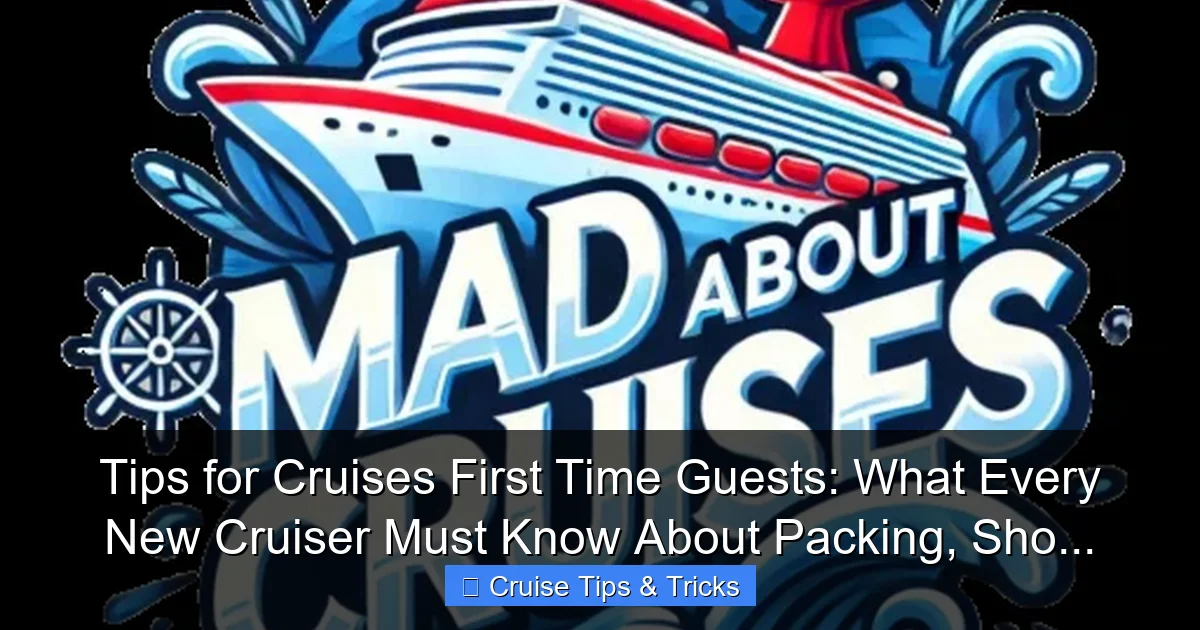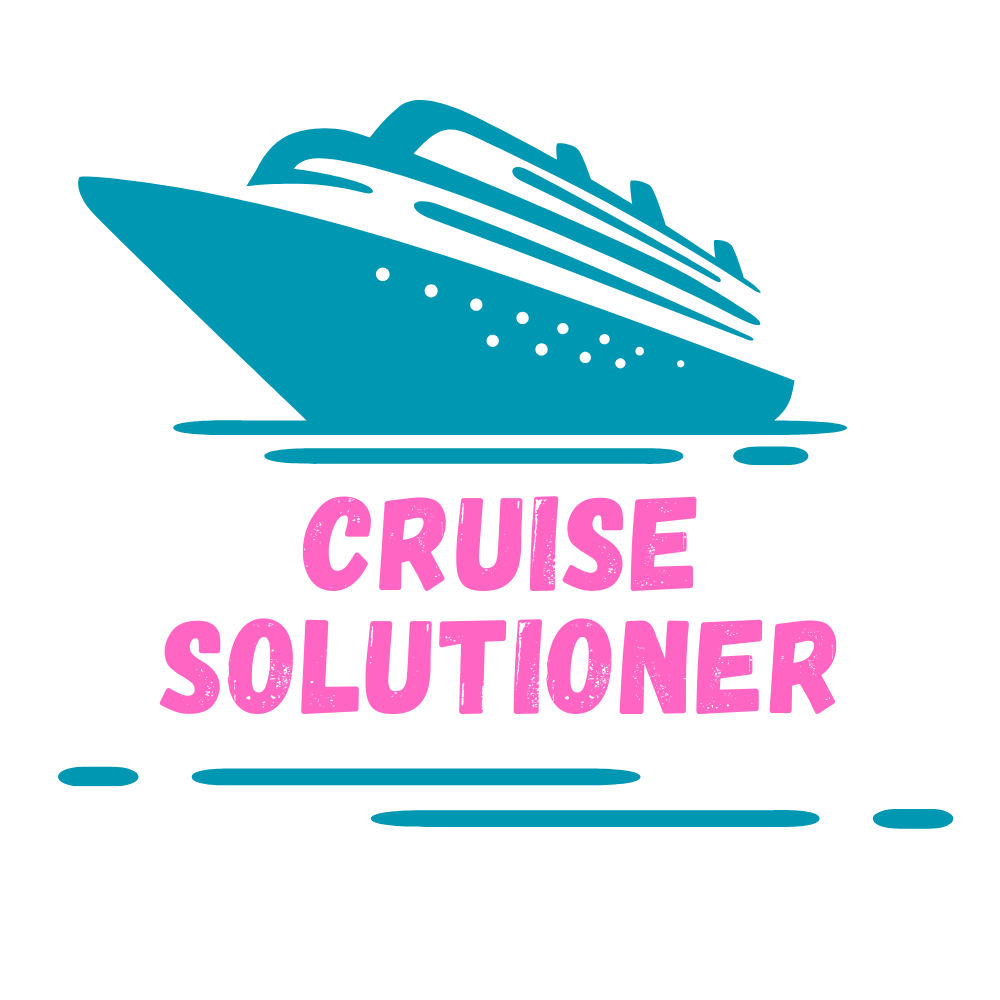
Featured image for this comprehensive guide about tips for cruises first time
Image source: madaboutcruises.com
Tips for Cruises First Time Guests: What Every New Cruiser Must Know About Packing, Shore Excursions, and More!
Are you dreaming of waking up to a new horizon each day, exploring exotic ports, and indulging in world-class amenities? If a cruise vacation is on your bucket list, you’re in for an unforgettable adventure! For many, however, the idea of a first time cruise can feel a little daunting. The sheer scale of modern cruise ships, the myriad of options, and unique logistics can leave even seasoned travelers with questions.
Fear not, aspiring seafarer! This comprehensive guide is specifically designed to equip new cruiser with all the essential tips for cruises first time guests need to know. From deciphering cruise jargon to packing like a pro and making the most of your onboard experience, we’ll navigate you through every step. Prepare to transform any pre-cruise jitters into pure excitement as we unlock the secrets to a spectacular first cruise experience!
Quick Answers to Common Questions
What should I pack in my carry-on when embarking for the first time?
Don’t forget a small carry-on with essentials like medication, swimwear, and important documents for embarkation day. Your main luggage might take a few hours to arrive at your cabin!
Is formal attire mandatory, or what are some tips for cruises first time guests who prefer casual wear?
While some cruise lines have optional formal nights, most are quite flexible! Pack comfortable resort casuals, and always check your specific cruise line’s dress code for any special dining experiences.
How do I pay for things on board, and what are some tips for cruises first time guests regarding on-board expenses?
Most cruise lines use a “sail and sign” card linked to your credit card for all purchases, so you won’t need cash for daily spending. Just keep an eye on your account through the TV or cruise app!
What are your best tips for cruises first time passengers worried about seasickness?
Don’t worry, modern ships are very stable! If you’re concerned, bring over-the-counter remedies like Dramamine or seabands, and consider choosing a cabin mid-ship on a lower deck for less motion.
What’s one of the most important tips for cruises first time guests to do right after boarding?
As soon as you board, explore the ship and locate key areas like dining rooms, your muster station, and guest services. Then, grab some lunch and enjoy your first moments at sea!
📋 Table of Contents
- Before You Book: Setting Sail on the Right Foot
- Packing Like a Pro: What to Bring (and What to Skip!)
- Mastering the Onboard Experience: From Dining to Entertainment
- Conquering Port Days: Maximizing Your Shore Excursions
- Health, Wellness & Safety: Cruising with Peace of Mind
- Navigating Your Cruise Budget: Avoiding Unexpected Costs
- Conclusion: Your Unforgettable First Cruise Awaits!
Before You Book: Setting Sail on the Right Foot
The success of your first time cruise largely depends on the choices you make before you even step foot on the gangway. It’s not just about picking a ship; it’s about choosing the right cruise line, destination, and itinerary that aligns with your vacation style and budget. With over 36 million passengers expected to cruise in 2024 according to CLIA (Cruise Lines International Association), the options are more diverse than ever.

Learn more about tips for cruises first time – Tips for Cruises First Time Guests: What Every New Cruiser Must Know About Packing, Sho…
Image source: celebritycruises.com
Choosing Your Perfect Cruise Line and Destination
- Research Cruise Lines: Different lines cater to different demographics. Royal Caribbean and Carnival are known for family-friendly fun. Norwegian Cruise Line offers “Freestyle Cruising” with flexible dining. Princess and Holland America often appeal to a more mature audience. Disney Cruise Line is perfect for families with young children. For your first cruise, consider a line known for excellent cruise tips for newcomers.
- Pick Your Destination: For new cruiser, popular choices include the Caribbean (warm weather, beautiful beaches, relatively short flights) or a quick Baja Mexico getaway. Alaskan cruises offer stunning scenery and wildlife, while European river cruises provide cultural immersion. Start with a destination that excites you and has straightforward logistics.
- Consider Itinerary Length: A 3-4 night “sampler” cruise can be a great way to test the waters for your first time cruise without a huge commitment. However, longer 7-night voyages often offer better value and more time to relax and explore.
Cabin Selection and Understanding What’s Included
- Interior (Inside) Cabins: Most budget-friendly, no window.
- Oceanview Cabins: Feature a window or porthole, offering natural light and a view.
- Balcony Cabins: Highly recommended for a first time cruise if your budget allows. Provides private outdoor space and fresh air.
- Suites: Larger, more luxurious, often with additional perks like priority boarding.
Your base cruise fare typically includes accommodation, most meals (main dining room, buffet, some casual eateries), basic entertainment, and access to pools/gym. It does NOT usually include specialty dining, alcoholic beverages, soda packages, Wi-Fi, shore excursions, spa treatments, or gratuities. Understanding this upfront is one of the most vital tips for cruises first time guests can get.
| Key Area | First-Timer Tip | Why It Matters / Impact |
|---|---|---|
| Packing & Luggage | Pack essentials (swimsuit, medication, toiletries) in your carry-on. | Checked luggage can take 4-8 hours to arrive at your cabin, delaying initial fun. |
| Onboard Spending | Set a daily budget and monitor your onboard account regularly. | Unchecked “hidden” costs (drinks, specialty dining) can increase your bill by 20-40%. |
| Port Excursions | Research and book tours in advance (cruise line or independent). | Independent tours can be 15-30% cheaper but cruise line tours guarantee return to ship. |
| Cabin Selection | Consider an inside cabin for budget, or a balcony for the experience. | Inside cabins are often 30-50% less expensive than balconies, ideal for budget-conscious cruisers. |
| Internet & Connectivity | Plan for limited or expensive Wi-Fi; download entertainment beforehand. | Onboard Wi-Fi typically costs $15-30 per day and can be unreliable; enjoy a “digital detox.” |
Packing Like a Pro: What to Bring (and What to Skip!)
Packing for a first time cruise can be tricky. You want to be prepared for various activities and climates, but also avoid overpacking. Remember, cruise cabins, while comfortable, are not typically expansive. Smart packing will enhance your overall first cruise experience.

Learn more about tips for cruises first time – Tips for Cruises First Time Guests: What Every New Cruiser Must Know About Packing, Sho…
Image source: lifewellcruised.com
Cruise Essentials You Can’t Forget
- Travel Documents: Passport (highly recommended, even for “closed-loop” cruises), boarding passes, luggage tags, credit cards, and cash (small bills are useful for tips and local vendors). Make copies of important documents and keep them separate.
- Medications: Bring all prescription medications in their original containers, plus over-the-counter essentials like pain relievers, antacids, and seasickness remedies (Dramamine, Bonine, or ginger chews). Many new cruiser underestimate the potential for motion sickness.
- Toiletries: While some basic toiletries are provided, bring your preferred brands, especially sunscreen, lip balm with SPF, and insect repellent for port days.
- Power Strip (non-surge protector): Cabins often have limited outlets. A non-surge protector power strip can be a lifesaver for charging multiple devices. Confirm cruise line policy before bringing.
- Refillable Water Bottle: Stay hydrated! You can fill it at water stations on the ship.
Dressing the Part: Attire for Every Occasion
The dress code on a first time cruise varies by cruise line and even by night. Here are some general cruise tips:
- Daytime: Casual resort wear – shorts, t-shirts, swimsuits, cover-ups. Comfortable walking shoes for exploring ports.
- Evening (Main Dining Room):
- Casual: Jeans (clean, no rips), slacks, blouses, polo shirts, casual dresses.
- Smart Casual: Slacks, collared shirts, dresses, skirts, blouses. Jackets are optional.
- Formal/Elegant (Optional): Many cruise lines still have one or two “formal nights.” Think suits, tuxedos, cocktail dresses, evening gowns. Participation is optional; you can always opt for casual dining alternatives if you prefer.
- Theme Nights: Some cruises feature “white parties,” “80s nights,” or other themes. Check your itinerary in advance if you want to participate.
- Layers: Even in warm climates, evenings on deck can be breezy. A light jacket or cardigan is always a good idea.
What NOT to Bring
For your first cruise, be aware of prohibited items. These typically include firearms, weapons, illegal drugs, irons, clothes steamers, electric kettles (fire hazards), candles, and surge protector power strips (non-surge protector ones are usually okay, but verify). Also, note cruise line limits on bringing your own alcohol.
Mastering the Onboard Experience: From Dining to Entertainment
Once you step aboard for your first time cruise, a world of possibilities unfolds. Modern cruise ships are floating resorts, offering an incredible array of dining, entertainment, and activities. Navigating this can be overwhelming for a new cruiser, but with a few key cruise tips, you’ll be a pro in no time.
Dining Delights: Navigating Your Culinary Journey
Food is a huge part of the cruise experience. For your first cruise, you’ll find:
- Main Dining Room (MDR): Included, multi-course meals. Options for assigned times or “anytime dining.”
- Buffet: Casual, open for breakfast, lunch, and dinner, offering variety.
- Casual Eateries: Pizza, burgers, tacos – often included and available throughout the day.
- Specialty Restaurants: Require an additional fee (or covered by a dining package). Offer elevated cuisine like steakhouses, Italian, sushi. Great for a special night!
- Room Service: Often 24/7, sometimes with a small convenience fee.
Pro Tip: Don’t hesitate to try new dishes or ask for a different option if you don’t enjoy your selection. This is your vacation!
Entertainment and Activities Galore
Every day on a cruise ship brings a new schedule of activities. Consult your ship’s daily planner (in-cabin or via the app) for:
- Broadway-style Shows: High-quality productions.
- Live Music: From jazz lounges to piano bars and deck parties.
- Casino & Bingo: Gaming options.
- Pool Deck: Swimming, hot tubs, sunbathing, sometimes movies.
- Fitness Center & Spa: Gym access is free; classes and spa treatments are extra.
- Enrichment Activities: Cooking demonstrations, trivia, dance lessons.
A good strategy for your first time cruise is to pick a few “must-do” activities each day and remain flexible.
Staying Connected and Managing Your Account
- Cruise Line App: Download your cruise line’s app before you embark. It’s often free to use onboard (even without a Wi-Fi package) for daily schedules, restaurant bookings, and even ship navigation. Essential for a smooth first cruise.
- Wi-Fi: Internet packages are available for purchase but can be expensive. Many opt to disconnect and enjoy the digital detox, or wait until port days to find free Wi-Fi.
- Onboard Account: Everything you purchase on the ship (drinks, specialty dining, excursions, spa) is charged to your “Sail & Sign” or “Stateroom Account” linked to your key card. You can usually monitor your spending via the app or at guest services.
Conquering Port Days: Maximizing Your Shore Excursions
One of the greatest joys of a first time cruise is waking up in a new, exciting destination almost every day. Port days offer the chance to explore local culture, relax on stunning beaches, or embark on thrilling adventures. Careful planning is key to making the most of these precious hours.
Planning Your Shore Excursions
- Book Early: Popular excursions sell out. Booking through the cruise line often offers convenience and ensures the ship waits if delayed.
- Independent Exploration: For the adventurous new cruiser, independent exploration can save money. Research local transport and reputable operators beforehand.
- Consider Your Interests: Tailor excursions to what excites you – history, beaches, adventure. Avoid over-scheduling, which is one of the best cruise tips.
- Budget for Excursions: These are extra costs, ranging from $30-$200+ per person, so factor this into your overall first cruise budget.
Staying Safe and On Schedule
- Know Ship’s All-Aboard Time: This is CRITICAL. Always return to the ship well before the published “all aboard” time. Cruise ship clocks might differ from local time, so rely on your ship’s time.
- Be Aware of Your Surroundings: Especially when exploring independently, stay vigilant, keep valuables secure, and avoid areas that feel unsafe.
- Inform Crew of Issues: If you miss the ship or have an emergency in port, contact the cruise line’s port agent (information usually found in your daily planner).
- Dress Appropriately: For some religious sites, modest clothing is required. For active excursions, wear comfortable shoes and practical attire.
Health, Wellness & Safety: Cruising with Peace of Mind
While cruises are generally very safe and enjoyable, being prepared for potential health and safety considerations is one of the most important tips for cruises first time guests. A little foresight can prevent minor issues from becoming major inconveniences, ensuring your first cruise is smooth sailing.
Combating Seasickness
Even if you’ve never been seasick, it’s wise to be prepared for your first cruise. Up to 1 in 3 people can experience motion sickness. Here’s what new cruiser should know:
- Preventative Measures:
- Over-the-Counter Remedies: Dramamine (drowsy and non-drowsy), Bonine, Meclizine. Start taking them *before* you feel sick.
- Natural Remedies: Ginger (candies, pills, tea), acupressure wristbands (Sea-Bands).
- Cabin Location: Mid-ship, on lower decks, tends to have the least motion.
- Focus on the Horizon: Look out at the fixed horizon line.
- Fresh Air: Go out on deck and get some fresh air.
- If You Feel Sick: Lie down, stay hydrated, and avoid heavy foods. The ship’s medical center can also provide medication (often for a fee).
Onboard Medical Facilities
Every cruise ship has a medical center staffed with doctors and nurses, equipped to handle routine illnesses and minor emergencies. However, these are private facilities and operate like land-based urgent care clinics, meaning services come with a fee. Ensure you have travel insurance that covers medical emergencies and evacuation.
General Safety Reminders
- Muster Drill: This mandatory safety briefing (usually on embarkation day) explains what to do in an emergency. Pay attention!
- Wash Your Hands: Norovirus, while not exclusive to cruises, can spread quickly. Frequent hand washing (especially before eating) is your best defense. Hand sanitizing stations are ubiquitous.
- Be Mindful of Balcony Safety: If you have a balcony, never climb on railings and always supervise children.
- Stay Hydrated & Limit Alcohol: Especially in warm climates, it’s easy to get dehydrated. Pace yourself with alcoholic beverages.
Navigating Your Cruise Budget: Avoiding Unexpected Costs
While a first time cruise can be an excellent value vacation, managing your onboard spending is crucial. Many new cruiser are surprised by how quickly extras can add up. Being informed about what’s included and what’s not will help you stick to your budget and truly enjoy your first cruise without financial stress.
Understanding “All-Inclusive” (and What It Isn’t)
The term “all-inclusive” in cruising often refers to accommodation, most meals, and basic entertainment. However, for most mainstream lines, a significant portion of your onboard experience comes with an extra charge. These are vital tips for cruises first time to remember:
- Drinks: Sodas, bottled water, specialty coffees, and alcoholic beverages are almost always extra. Consider a drink package if you plan significant consumption, but calculate if it’s truly worth it (e.g., packages can be $50-90+ per person daily for alcohol).
- Wi-Fi: Internet packages are available for purchase but can be expensive. Many opt for a digital detox or use free Wi-Fi in port.
- Shore Excursions: These are usually the largest additional expense. Budget accordingly.
- Specialty Restaurants: Expect a cover charge, typically $25-$50+ per person.
- Spa & Salon Services: Massages, facials, haircuts, and other treatments are premium services.
- Shopping: Souvenir shops, duty-free stores, and art galleries are enticing.
- Casino & Bingo: Entertainment that involves wagering.
- Gratuities: These are often automatically added to your onboard account daily (typically $14-$18 per person, per day). You can pre-pay or adjust them at Guest Services.
Smart Spending Strategies for Your First Cruise
- Track Your Onboard Account: Most cruise lines allow you to view your running tab on the ship’s app or TV. Check it daily to avoid surprises.
- Bring Your Own (Within Limits): Many lines allow you to bring a certain amount of non-alcoholic beverages (soda, juice) and often one bottle of wine or champagne per adult for embarkation. This can save you money on drinks.
- Set a Daily Budget: Decide how much you’re willing to spend on extras each day and try to stick to it.
- Research Drink Packages: If you plan on having 4-5 alcoholic drinks per day (plus sodas, coffees, bottled water), a drink package might save you money. Do the math!
- Look for Port Discounts: Sometimes local vendors in port offer better deals on souvenirs or specific items than onboard shops.
Navigating the costs of a first time cruise doesn’t have to be a challenge. With these proactive cruise tips, you can enjoy all the ship has to offer without breaking the bank.
Cruise Industry Snapshot & First-Timer Trends
The cruise industry continues to grow, attracting a diverse range of travelers. Here’s a quick look at some relevant data that might interest a new cruiser:
| Metric | Value / Trend | Source / Note |
|---|---|---|
| Projected Cruise Passengers 2024 | ~36 million | CLIA (Cruise Lines International Association) |
| First-Time Cruisers (Recent Data) | Around 25-30% of total passengers | Varies by year and cruise line; significant segment |
| Most Popular First-Time Cruise Destination | Caribbean (over 30% of global deployments) | CLIA; accessible & diverse ports |
| Average Cruise Length (North America) | 7.2 days | CLIA (pre-pandemic data, still representative) |
| Repeat Cruisers | ~80-90% satisfaction rate, leading to high repeat bookings | Industry reports; cruises often create lifelong fans |
This data highlights that you’re joining a thriving community, and many new cruiser become repeat guests, a testament to the unique appeal of a cruise vacation!
Conclusion: Your Unforgettable First Cruise Awaits!
Embarking on a first time cruise is an exhilarating experience, a journey filled with discovery, relaxation, and adventure. By arming yourself with these essential tips for cruises first time guests, you’re not just booking a vacation; you’re preparing for a seamless and truly memorable escape.
From choosing the perfect itinerary to packing strategically, mastering the onboard offerings, and navigating port days with confidence, you now have the knowledge to sail like a seasoned pro. Remember, the goal is to relax, explore, and create lasting memories. So, take a deep breath, get excited, and prepare to cast off on what promises to be an incredible first cruise. Fair winds and following seas!
🎥 Related Video: 5 Tips For First Time Cruisers 🛳️
📺 Kemoy Martin
Frequently Asked Questions
What are the most essential items to pack for cruises first time?
Focus on versatile clothing for different activities and temperatures, including swimwear, smart casual outfits for dinner, and comfortable shoes for exploring ports. Don’t forget essentials like any prescription medications, sunscreen, and a portable charger for your devices.
What’s typically included in the cruise fare, and what are common extra costs for first-time cruisers?
Your fare generally covers your stateroom, most meals (main dining room, buffet), basic entertainment, and access to many ship facilities. Expect to pay extra for specialty restaurants, alcoholic beverages, Wi-Fi, shore excursions, spa treatments, and automatic gratuities.
What should I know about dining options and dress codes on my first time cruise?
Most ships offer a variety of dining, from casual buffets to elegant main dining rooms and specialty restaurants requiring reservations. While many nights are “smart casual,” some ships have specific formal nights, so check your cruise line’s recommendations if you wish to participate.
How do I choose and book shore excursions for my cruises first time?
You can book excursions directly through the cruise line, which offers convenience and guaranteed return to the ship before sailing. Alternatively, you can research and book independent tours or explore ports on your own for more flexibility and potentially lower costs.
What’s the process like for boarding and leaving the ship for first-time guests?
Embarkation involves checking in, security, and boarding, often starting a few hours before sailing – arrive early to avoid long lines. Disembarkation typically begins early on your last day, with guests leaving in groups based on luggage tags, so plan your travel accordingly.
What if I get seasick on my first cruise, and how can I prepare?
Seasickness is a common concern for first-timers, but there are many remedies available, including over-the-counter medications like Dramamine or Bonine, acupressure bands, and ginger. Choosing a mid-ship, lower-deck cabin can also help minimize motion.
